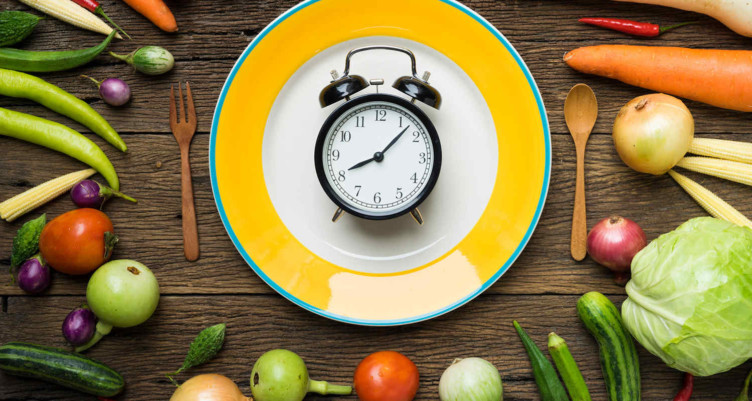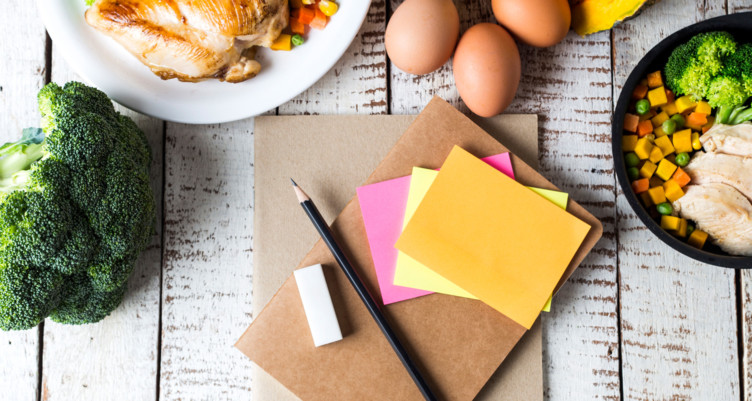How to Do an Elimination Diet and Why Everyone Should Try One

- Elimination diets help individuals identify their food sensitivities, by allowing them to assess how they feel when they avoid certain foods.
- The process involves completely avoiding potentially reactive foods for a period of time, then reintroducing those foods into the diet one at a time to identify whether they produce a reaction in your body.
- Doing an elimination diet at least once can help you know whether you’re dealing with underlying food sensitivities or intolerances.
Do you suspect you have a food intolerance? Perhaps you have digestive or other issues that seem to come and go, or you’re experiencing lingering brain fog and fatigue. The answer might be on your plate. Learning how to do an elimination diet might help you identify underlying food sensitivities and intolerances.
Estimates vary widely, but as much as 20% of the population experiences at least one food intolerance.[1] Awareness of intolerances to common foods like gluten and lactose is more common, and those who identify their food sensitivities report they can eliminate uncomfortable symptoms by avoiding those foods.
An elimination diet is an easy way to identify food intolerances. If you’re wondering how to do an elimination diet, this article will help. Once you understand the basic premise, it’s easy to put together an elimination diet meal plan.
Please note: Always consult with your doctor before starting an elimination diet, to ensure you do not have any food allergies, which can be life-threatening or potentially fatal.
What is an elimination diet?
How do you know if you have food sensitivities or intolerances? Following an elimination diet can be helpful. If your food sensitivity symptoms stop after removing a particular food from your diet, you will confirm your suspicions.
There are different types of elimination diets. For example, some people feel better after eliminating gluten and dairy for a few weeks. Others might follow a more detailed elimination diet to manage symptoms of irritable bowel syndrome that removes all fermentable oligo-saccharides, disaccharides, mono-saccharides, and polyols (FODMAP).[2]
In general, an elimination diet completely avoids common foods known to cause sensitivities, then reintroduces those foods one at a time. The goal is to identify whether certain foods might be causing inflammation, headaches, skin issues, digestive discomfort or other side effects.
By eliminating that food from your diet for a period of time, you might discover that you sleep better, think more clearly and experience fewer digestive discomforts. This process may initially feel complicated or restrictive, but it could lead to improved overall health and wellness. And you can get creative in the kitchen with elimination diet recipes that’ll keep you fueled and help you avoid any food intolerance symptoms.
For many people, an elimination diet is the best way to identify the foods cause problems. You might learn that you don’t need to reduce or avoid certain carbohydrates—maybe you just need to cut back on sugar or gluten to feel your best. Good news: You can find a delicious variety of foods, snacks and supplements made without gluten, artificial sweeteners, soy or dairy, like Bulletproof Collagen Protein Bars.
Signs of food sensitivities

A food intolerance is not the same as a food allergy, though some symptoms may overlap.[3] A food allergy is an immune system response that needs to be diagnosed and treated by a health-care professional. Allergies can be life-threatening or even fatal. A food intolerance or sensitivity is a digestive system response that, while uncomfortable, will not cause life-threatening issues. This is why you should always talk to your health-care provider before starting an elimination diet.
Food intolerances can be mild – and even mistaken for something else entirely. Gluten, for example, can cause some people to feel fatigued. While an allergic reaction happens quickly, food intolerance symptoms can be delayed 24 to 48 hours, and they can last for hours or days.[4]
How do you know if you have a food intolerance issue? Some symptoms and reactions include:
- Dry skin
- Gastrointestinal issues, such as intestinal gas, bloating, constipation and diarrhea
- Itching
- Digestive upset
- Fatigue
- Headaches
- Stomach aches
- Joint aches and pains
- Migraines
Every individual reacts to foods differently, so be mindful of how you feel after you eat.
What can you eat on an elimination diet?

The primary challenge of an elimination diet is deciding which foods are most likely to cause a reaction. With The Bulletproof Diet Roadmap, we’ve made it easy, with a step-by-step guide on how to do an elimination diet.
The Roadmap takes into account the likelihood that a food or food group may cause inflammation or reactions in your body. Eat from the Roadmap’s green zone during your elimination period. This elimination diet food list allows nourishing choices like grass-fed, organic meats, most plant-based whole foods and some plant-based products like MCT oil (which comes from coconuts). Fill your plate with quality proteins, healthy fats and vegetables in the green zone.
Here’s how to do an elimination diet, using the Bulletproof Diet Roadmap:
- Eat exclusively from the green zone for at least two weeks, avoiding eggs and dairy.
- Make a list of foods you want to test for your body’s reaction.
- To begin the reintroduction phase, choose one test food to reintroduce into your diet. Eat it as desired for three days.
- Take detailed notes on how you feel during this reintroduction, and notice everything you’re feeling. No matter how small it seems, write everything down.
- After day three, return to only green zone foods for three to four days, until you’re feeling back to normal again. Then repeat steps 3-5 until you’re through your entire list of test foods.
Foods to avoid during an elimination diet
Wondering which common foods and food groups to avoid during your elimination diet? Here’s a helpful elimination diet food list of food groups to avoid:[5]
- Dairy products (including milk, ice cream and sour cream)
- Eggs
- Gluten (including barley, oats, rye and wheat)
- Fish and shellfish
- Nightshades (tomatoes, eggplant, peppers and potatoes)
- Citrus (contain high amounts of potentially reactive antioxidants)
- Legumes (including soy-based products, beans, lentils, peanuts and peas)
- Tree nuts
- Corn
- Smoked or cured meats, which may contain the biogenic amines histamine and tyramine, known to potentially cause reactions[6]
- Sweets, candy and any food containing refined sugar, corn syrup, artificial colors and flavors
Sample elimination diet meal plan
Double-check your food labels when you start your elimination diet. Some foods may seem like they are acceptable until you read the ingredients. Not sure where to start? Here’s an example of what a basic elimination diet meal plan could look like for the day. Of course, this is just one example of what you can enjoy during an elimination diet, but you’ll notice elimination diet meal plans are free of the foods listed above.
- Breakfast: If you’re drinking coffee on your elimination diet, start your day with Bulletproof Coffee, which is full of quality fats that help you feel alert and satisfied. Avoiding caffeine? Try a satisfying Keto Hot Chocolate instead.
- Lunch: For lunch, choose a refreshing Low-Carb Thai Salad With Grilled Steak, which incorporates fresh vegetables, coconut oil or Bulletproof Grass-Fed Ghee and grass-fed top-sirloin in a spicy Asian-inspired marinade (omit the honey).
- Snack: Throughout the day, snack on foods like crunchy vegetable sticks and sweet potato chips. Check out these other Whole30 snacks for inspiration.
- Dinner: Finish the day with this nutrient-rich Slow-Cooker Beef Stew recipe, which you can prepare ahead of time and simmer all day long. Serve with quinoa, brown rice or buckwheat, which are elimination diet-friendly, gluten-free side dishes.
How long does the elimination diet take to work?

This depends on your body and the specific elimination diet you choose. Some people feel changes within the first few days, but it can also take several weeks or even several months on an elimination diet to notice a difference.
Here are two examples:
- Whole30 is an elimination that cuts out common trigger foods, like ultra-processed foods, artificial additives, grains, dairy and legumes. It’s meant to last 30 days.
- The FODMAP elimination diet can last three to four months. A FODMAP diet cuts out foods that are high in certain short-chain carbohydrates (fibers, starches and sugars) that can irritate your digestive system. It includes an initially low-FODMAP diet elimination phase and a long reintroduction process when eliminated foods are slowly reincorporated.
But whether you go with Whole30, FODMAP elimination diet or some other plan, it depends on your body. There’s no single period of time for everyone.
Also, keep in mind that it takes time for your body to eliminate the trigger foods from your system, and even longer for your body to stop reacting. If your reactions don’t improve right away, keep going—and stay in communication with your health-care provider.
While an elimination diet can be helpful for some people, it may not work for everyone, and food may not be the problem. Your doctor or healthcare provider can offer specific medical insights and run tests for specific allergens. It may also help to consult with a nutritionist or registered dietitian.
Why everyone should do an elimination diet at least once

Even if you don’t think you have any food sensitivities, you may benefit from doing an elimination diet at least once. Keep reading to find out why.
More energy and mental clarity
If your body is reacting to something you eat regularly, you might not know how potentially good you can feel because your body is in reaction mode every single day. After the initial detoxification period of a few days, many people report feeling more energy and clarity.
If you experience the same increase in energy and/or mental clarity, it is a good indication that certain foods affect you.
Identify foods that cause inflammation
Between everyday stress, pollutants, chemicals in our food and water and other environmental stressors, modern society deals with a lot of inflammation.
Your inflammatory response is an important part of your immune system, and you need it to turn on when necessary. You also need it to turn off when the work is done. If your immune system stays engaged long-term, you develop chronic inflammation. Over time, it can harm healthy cells and tissues, causing lasting damage.
Chronic inflammation can be subtle, even imperceptible to you. An elimination diet can reveal whether a food is contributing to chronic inflammation.
If you continue to experience low-level issues, like feeling tired, foggy, achy or itchy, your body adjusts to it. You might even think it’s normal. When you feel better for a few weeks, symptoms are more noticeable when they come back again after eating food you’ve been avoiding.
When you bring food back, take notice of everything happening in your body and mind. Your body will notify you when something isn’t working well. All you need to do is pay attention.
Here’s an important caveat: Elimination diets are restrictive by nature. If you have a history of eating disorders, work closely with a physician or registered dietitian.
Give us 30 days and we'll give you more energy. Get tips, recipes and more that will help you become the best version of YOU.
This article was originally published November, 2018 and has been updated with new content.



